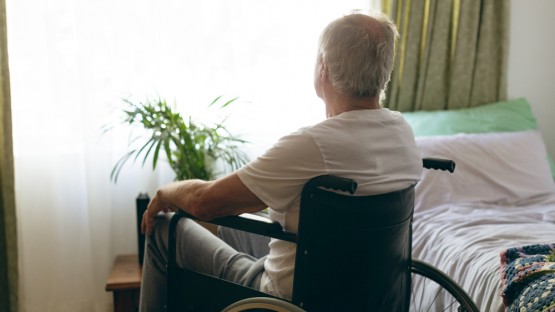Epidemiological models of COVID-19 that are used to guide policies on social distancing measures should take into account the special dynamics of the coronavirus’s spread in nursing homes and other long-term care (LTC) facilities, according to Weill Cornell Medicine researchers.
The researchers, in a commentary published online June 5 in the Journal of the American Medical Association, note that conditions in LTC facilities tend to be highly conducive to the spread of SARS-CoV-2, the coronavirus that causes COVID-19. These facilities have accounted for a vastly disproportionate number of COVID-19 cases, as well as COVID-19 deaths – more than 40% of deaths from the disease in the United States overall, while LTC facilities house only a small percentage of the population – and more than 80% of COVID-19 deaths in some states.
Despite this, prominent epidemiological models that many national governments have used to guide their COVID-19 policy responses, including social distancing policies, have treated LTC populations as if they are identical to surrounding populations – likely with adverse consequences for both, the investigators say.
“This is really a tale of two pandemics – a very intense one in long-term care facilities, and a much more varied one in the wider community – yet these influential models have failed to distinguish between the two,” said lead author Karl Pillemer, a professor of gerontology in medicine at Weill Cornell Medicine and the Hazel E. Reed Professor in the Department of Human Development, in the College of Human Ecology at Cornell.
As the researchers note in their commentary, the most prominent and influential COVID-19 models work by estimating the numbers of susceptible, exposed, infectious and recovered people in a given population. These models can take into account the way that major factors such as age alter the risks faced by virus-exposed people – for example, the risk of developing serious COVID-19 illness that requires hospitalization, or of dying from that illness. They may also break down a national population into different state or provincial populations to model the effects of local disease-control policies.
However, these models have not distinguished between the general population and the uniquely vulnerable population that resides in nursing homes and other LTC facilities. The latter typically are older and relatively immobile, have age-related diseases such as dementia, and are the likeliest to perish when they get COVID-19, with case-fatality rates of 20% or more. Social distancing and isolation measures aren’t feasible for most of these individuals, due to their frailty and the density of their living arrangements – in which a single infected resident or caregiver may quickly infect everyone else. In this vulnerable, cloistered population, policies aimed at preventing COVID-19 spread in the wider community may have little or no effect, or even an adverse effect.
“In both the United States and the United Kingdom, early model-based projections about the need for vast numbers of hospital beds for the general community were used to support COVID response policies that accelerated discharges of older patients back to their residential facilities in order to create ‘surge capacity’ – paradoxically seeding the very outbreaks among the most medically vulnerable that those planning efforts were intending to prevent,” said senior author Dr. Nathaniel Hupert, an associate professor of medicine and of population health sciences at Weill Cornell Medicine.
“We need new models to capture the disease spread and mortality characteristics within these long term care facilities,” said Lakshminarayanan Subramanian, a professor in the Courant Institute of Mathematical Sciences at New York University, and an author on the commentary. “These dynamics fundamentally differ from conventional population-level epidemiology models that have been used for capturing COVID-19 spread across geographies.”
Modeling LTC populations separately from community-living populations would help characterize outbreaks in each, making it easier for policymakers to institute measures appropriate for both populations, including for example the provision of more personal protective equipment to nursing home staff, the authors write. Such steps might save many thousands of lives, and at the same time spare the United States and other countries unnecessary economic damage from measures that are predicated on inaccurate estimates of COVID-19 community spread, the researchers say.
“It’s likely that in many states, the lockdowns have been more successful than people realize, and COVID-19 infections in the wider community really have been dropping, even as infections continue more or less unabated in nursing homes,” Pillemer said. “The influential models still cannot capture that distinction, though – and we argue that you can’t continue to do public health planning and make policies based on COVID-19 models unless the models do distinguish these two separate pandemics that have very different rules by which they run and require very different interventions.”
Jim Schnabel is a freelance writer for Weill Cornell Medicine.















